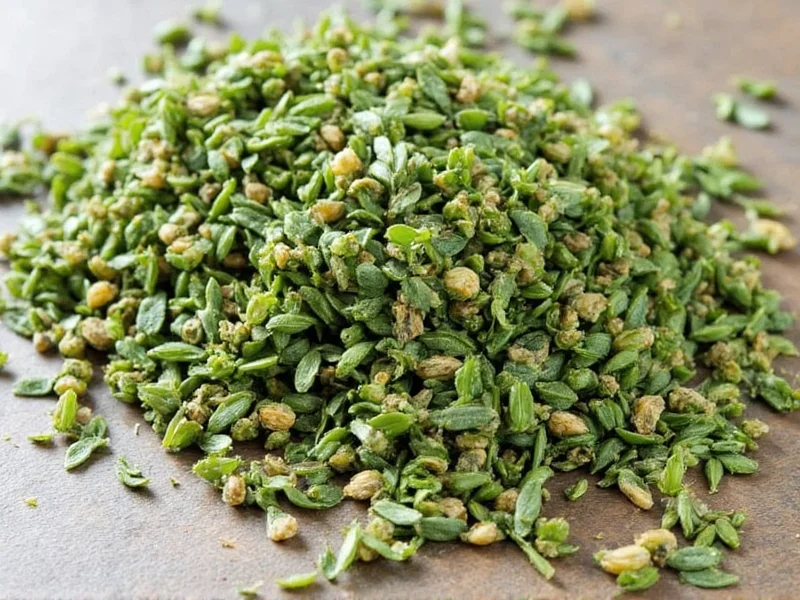Understanding the distinction between Mexican oregano and regular oregano is essential for authentic cooking, particularly when preparing Latin American and Mediterranean dishes. Many home cooks mistakenly use these herbs interchangeably, which can dramatically alter the intended flavor profile of a dish. This comprehensive guide explores the botanical, sensory, and practical differences between these two popular culinary herbs.
Botanical Classification and Origins
Mexican oregano (Lippia graveolens) belongs to the verbena family and is native to Mexico, Central America, and the southwestern United States. Despite its name, it's not technically oregano but shares enough culinary similarities to earn the designation. This perennial shrub thrives in hot, arid climates and features elongated leaves with a slightly fuzzy texture.
Regular oregano (Origanum vulgare), often called Mediterranean or European oregano, is part of the mint family (Lamiaceae) and originates from Europe, particularly Greece and Italy. It grows as a hardy perennial in temperate climates and has small, oval-shaped leaves with a smooth surface. The most common culinary varieties include Greek oregano (Origanum vulgare subsp. hirtum), considered superior for cooking.
| Characteristic | Mexican Oregano | Regular Oregano |
|---|---|---|
| Botanical Name | Lippia graveolens | Origanum vulgare |
| Plant Family | Verbenaceae (Verbena) | Lamiaceae (Mint) |
| Native Region | Mexico, Central America | Mediterranean region |
| Leaf Texture | Slightly fuzzy, elongated | Smooth, oval-shaped |
| Primary Flavor Notes | Citrus, pepper, earthy | Floral, sweet, herbal |
Flavor Profile Comparison
The most significant difference between Mexican oregano and regular oregano lies in their flavor chemistry. Mexican oregano contains higher concentrations of sesquiterpenes, giving it distinctive citrus and mild licorice notes with a subtle peppery finish. Its flavor is more robust and assertive, making it ideal for bold dishes that need to stand up to long cooking times.
Regular oregano features higher levels of carvacrol and thymol, creating its characteristic floral, slightly bitter, and earthy flavor profile. Greek oregano, the preferred culinary variety, has a more intense flavor than Italian oregano, which tends to be milder and sweeter. Regular oregano's flavor is more delicate and can become bitter when overcooked.
Culinary Applications and Traditional Pairings
Mexican oregano shines in Latin American cuisine, particularly in:
- Mexican moles and adobo sauces
- Bean dishes and chili recipes
- Soups like pozole and menudo
- Marinades for grilled meats
- Salsas and tomato-based dishes
Its robust flavor withstands long cooking times without diminishing, making it perfect for slow-simmered dishes. The citrus notes complement lime and other acidic ingredients commonly used in Mexican cooking.
Regular oregano is essential in Mediterranean cuisine, featuring prominently in:
- Italian tomato sauces and pizza
- Greek salads and lemon-oregano chicken
- Mediterranean vegetable dishes
- Herb blends like za'atar and herbes de Provence
- Olive oil infusions
Its more delicate flavor works best when added toward the end of cooking or used fresh in salads and dressings to preserve its nuanced taste.
Substitution Guidance
While Mexican oregano and regular oregano can sometimes substitute for each other, understanding the proper ratios and limitations is crucial for recipe success. When substituting Mexican oregano for regular oregano, use about half the amount called for, as its flavor is more intense. Conversely, when using regular oregano in place of Mexican oregano, you may need to increase the quantity by 25-50% while adding a pinch of cumin or citrus zest to approximate the missing flavor notes.
For authentic Mexican dishes, Mexican oregano has no perfect substitute. If unavailable, a combination of regular oregano, marjoram, and a touch of cumin provides the closest approximation. For Mediterranean dishes requiring regular oregano, Mexican oregano will create an entirely different flavor profile that most traditionalists would consider inauthentic.
Availability and Storage Tips
Mexican oregano is increasingly available in well-stocked supermarkets, particularly in regions with significant Latin American populations. Specialty Latin markets almost always carry it, either dried or occasionally fresh. Online retailers offer both dried leaves and seeds for growing your own plant.
Regular oregano is widely available in most grocery stores, both fresh and dried. Greek oregano, considered the premium culinary variety, may require a specialty market or online purchase.
For optimal storage, keep both varieties in airtight containers away from light and heat. Dried Mexican oregano maintains peak flavor for 6-9 months, while regular oregano stays fresh for 4-6 months. Freezing dried herbs extends their shelf life to 12-18 months. Fresh Mexican oregano (less common) can be stored in the refrigerator wrapped in a damp paper towel inside a plastic bag for up to one week.
Common Misconceptions
Many cooks assume all oregano is interchangeable, but this overlooks the significant botanical and flavor differences. Another misconception is that Mexican oregano is simply a stronger version of regular oregano—it's actually a completely different plant with unique flavor compounds.
Some believe dried oregano is always inferior to fresh, but for Mexican oregano, the drying process actually concentrates its essential oils, making the dried form preferable for most traditional applications. With regular oregano, fresh is generally preferred for raw applications, while dried works better in cooked dishes due to its more concentrated flavor.











 浙公网安备
33010002000092号
浙公网安备
33010002000092号 浙B2-20120091-4
浙B2-20120091-4